Cladding Installation Services & re-cladding
SCE BUILDING takes pride in its premier Cladding Services and Re-Cladding solutions, catering to the diverse needs of structures across Australia. Cladding installation services, as defined by the Australian Government, involve non-loadbearing layers attached to a building’s exterior to protect against weather and ensure aesthetic appeal. With our unwavering commitment to safety and adoption of the latest building technology, we offer professional and integral solutions for buildings with non-compliant cladding.
Our team’s vast experience in the building industry ensures that we approach each project with expertise and attention to detail. Safety is our top priority, and we go the extra mile to enhance the overall safety of structures through our cladding services. We focus on weather-proofing, energy efficiency, and acoustic rating, creating an optimal environment for occupants.
Energy efficiency is crucial in modern building designs, and our cladding services contribute to reducing energy consumption and promoting sustainability. The use of compliant cladding materials and techniques ensures structures meet the necessary standards and regulations, adhering to AS-1530.1 requirements.
Our cladding services extend to AS-1530.4, which involves fire test criteria and Fire Resistance Level (FRL) requirements. By carefully reviewing compliance with these standards, we ensure structures are adequately protected against fire hazards, providing peace of mind to building occupants.
In addition to the technical aspects, we conduct comprehensive building assessments to evaluate the structural adequacy, integrity, and insulation. This meticulous approach guarantees that every aspect of the cladding process is executed to the highest standards, resulting in safe, functional, and visually appealing buildings.
At SCE BUILDING, we understand that cladding is not just a practical measure but also a crucial element influencing the property’s value. Our expert team ensures that the cladding solutions we provide contribute to enhancing the overall value and appeal of your building.
With a nationwide reach, we are dedicated to helping structures across Australia achieve compliance and safety. Our cladding services cater to a wide range of building types, including commercial, residential, and industrial projects.
Choose SCE BUILDING for innovative cladding solutions backed by extensive knowledge, cutting-edge technology, and a commitment to excellence. Let us transform your property with our reliable and superior cladding services.
Cladding Services - Re-Cladding Non-Compliant Cladding
Our comprehensive cladding services encompass:
- Enhancing overall safety standards
- Ensuring effective weather-proofing
- Promoting energy efficiency
- Enhancing acoustic performance
- Installation of compliant cladding adhering to AS1530.1
- Reviewing compliance with AS-1530.4 for fire safety and FRL requirements
- Conducting building assessments for structural adequacy, integrity, and insulation.
historical event
Grenfell Tower, a 24-storey block in West London was covered in fire.
It took just 90 minutes for the fire to race up 20 storeys of the Grenfell Tower in June 2017.
It took 24 hours to get it under control and 60 hours to extinguish it fully; killing 72 people and 70 more were injured.
The reason why the fire was propagated in such a high velocity, was due to the Combustible Aluminium cladding used in the facade of the building.

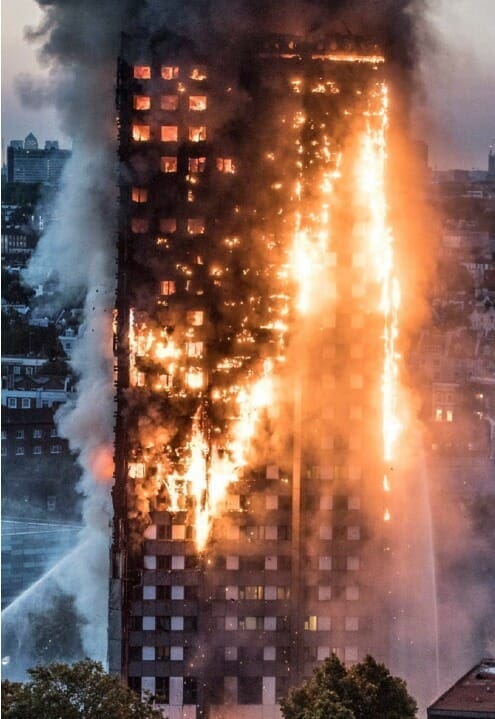
Grenfell Tower on fire
London,2017. Grenfell Tower. Uncontrolled fire due to Combustible Cladding
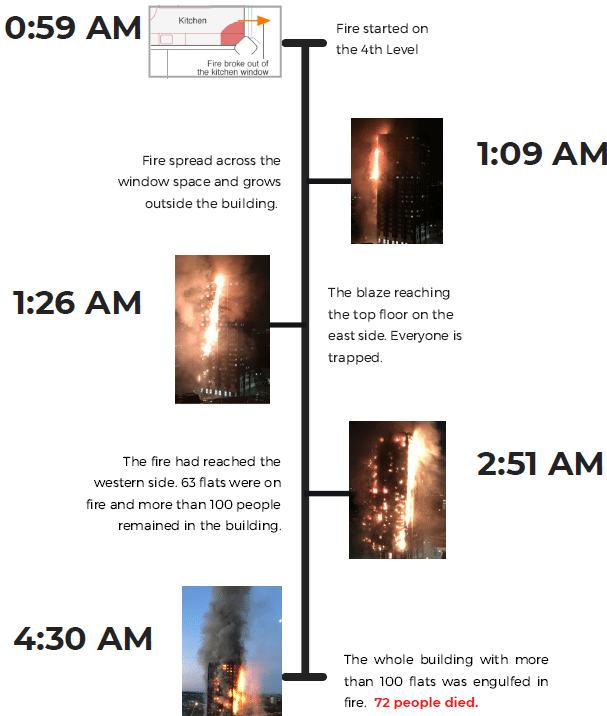
common types of cladding
EPS
Expanded Polystyrene
Expanded polystyrene is a type of composite cladding. It was well received in the market due to its insulating properties, light weight and low cost, however, is combustible and increases the likelihood of fire spreading more quickly.
It may shrink, melt, or ignite when exposed to elevated temperatures. For this reason, it is not considered safe for use on multi-storey buildings.
EPS has been used widely in the Australian Building Industry over the past 20 years.
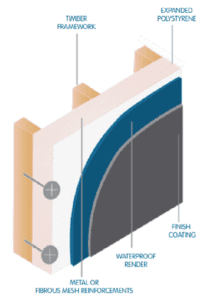
ACP
Aluminium Composite Panel

ACP are sandwich-type panels consisting of two aluminium faces and a core material, typically either polyethylene or a mineral-based material, or a combination of both. Panel thicknesses typically range from 3mm to 5 mm. Many of these products are marketed as architectural building panels. There are a number of different products on the market that appear outwardly similar, yet there is a difference in the core materials used.
ACP categories
Aluminium Composite Panels (ACP) are often split into categories based on the amount of polymer core contained between the two aluminium layers. The categories are specified as per below:

The highest-risk ACP products have a 100 percent polymer core – usually polyethylene – which is often black and classified as ‘PE’.
Products known as FR have been found to contain approximately 30% of polymer content in the core. It has the potential to quickly spread the fire depending on how the project is used.
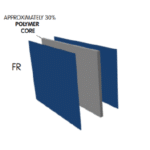

Products known as ‘A2’ ordinarily have less than 10% polymer in the core and the potential to spread fire is low.
Materials chart
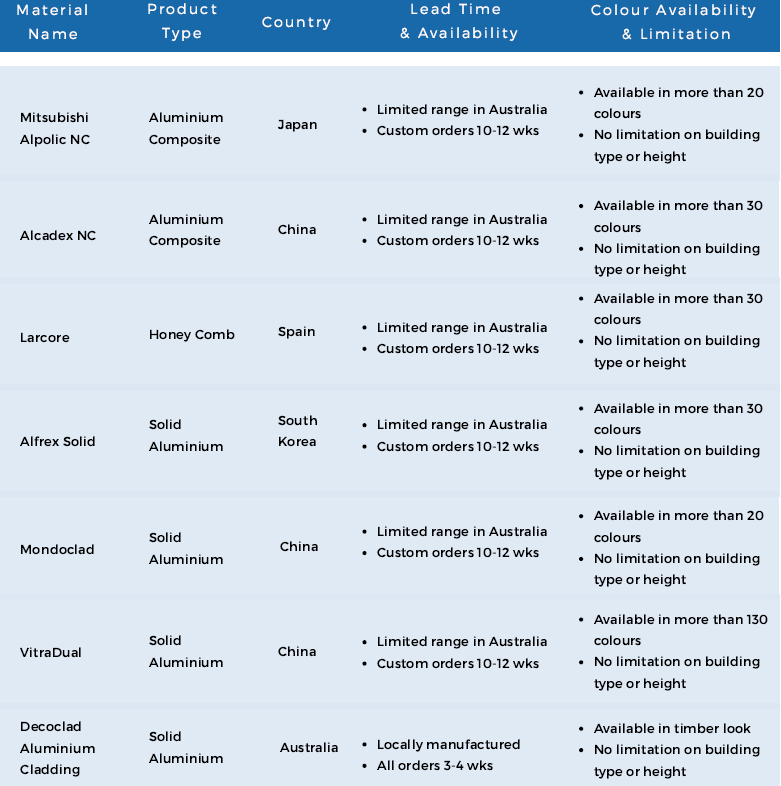
substructure chart

assuring performance
external cladding requirements
When it comes to cladding installation services or re-cladding, there are multiple factors that dictate what type of substructure or material is to be utilised. These factors are determined through systematic analysis of the structure, building design, building height, building location, cladding type, sprinkler systems, form of construction, and wind loads. For this reason, every building needs a different approach in terms of material specification, substructure and installation.
According to the Australian Building Codes Board (ABCB) there are two main issues resulting in the use of non-compliant cladding and installation methods, they are:
(1) First, a lack of understanding about what evidence should be sought in order to confirm product suitability for an external cladding.
- Manufacturers and suppliers may not be clear about the information or test parameters required to ensure compliance.
- For designers, information provided by the suppliers may be inconclusive in demonstrating compliance with the BCA, compromising their ability to choose appropriate cladding products.
- Regarding builders, installation guidelines may not clearly establish compliance requirements, hence builders may rely on their own experience in assessing cladding products on site. In these circumstances it is possible that a non-compliant method could be utilised.
- For building certifiers, the information about a product installed on a building may not be sufficient to enable them to definitively assess the finish product as non-compliant.
(2) Additionally, installers may deviate from the specified designs and substitute products which may not be able to meet fire resistance requirements. Substitution is typically done to lower costs however jeopardises quality.
At Sydney Contracting Engineers we close up the industry gap between manufacturer, supplier, fabricator, engineer, designer, builder and installers to ensure only compliant finished products are achieved across all our projects.
"when it comes to safety and design, attention to detail could save lives"
Thank you for your visit, and welcome to the construction home

